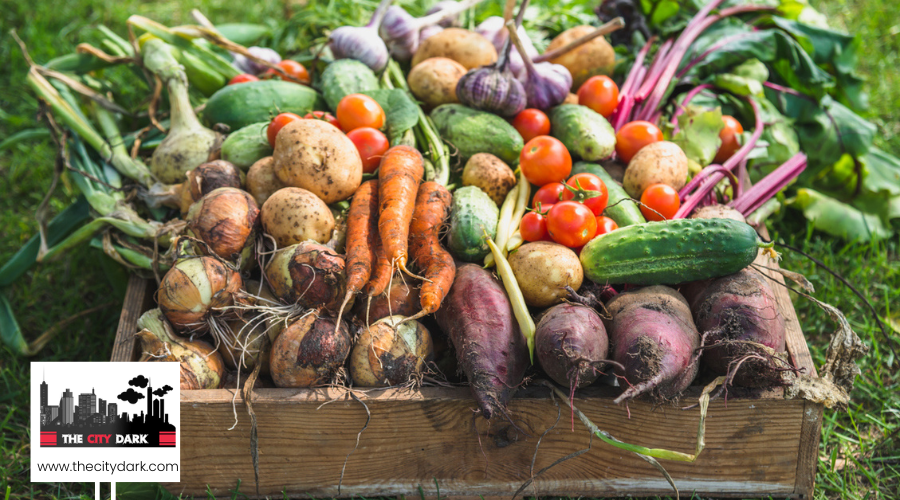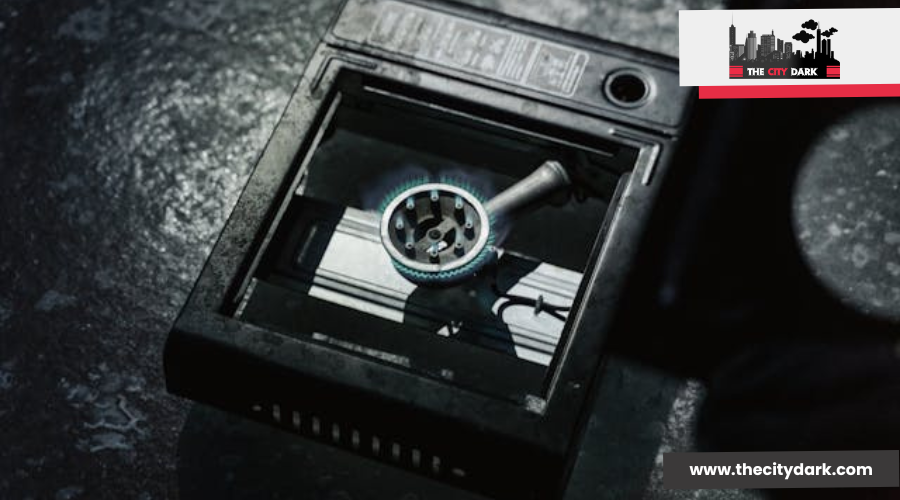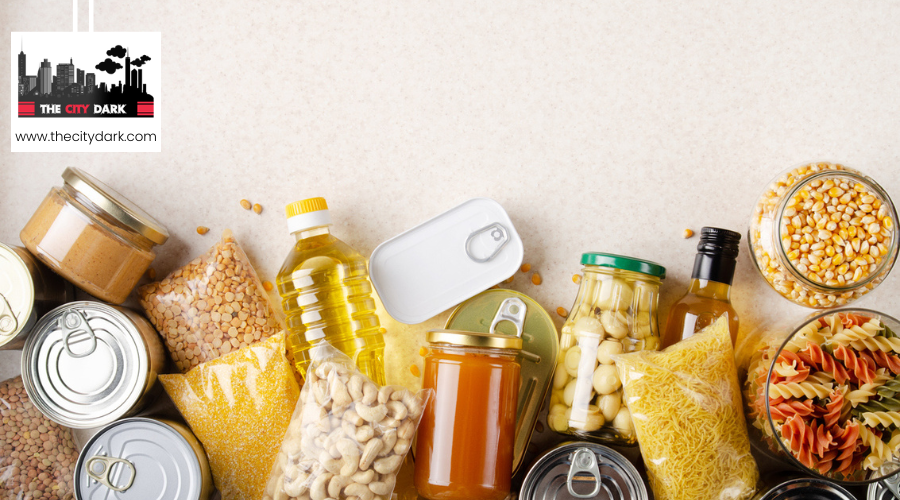Essential Supplies to Stockpile at Your Bug Out Location
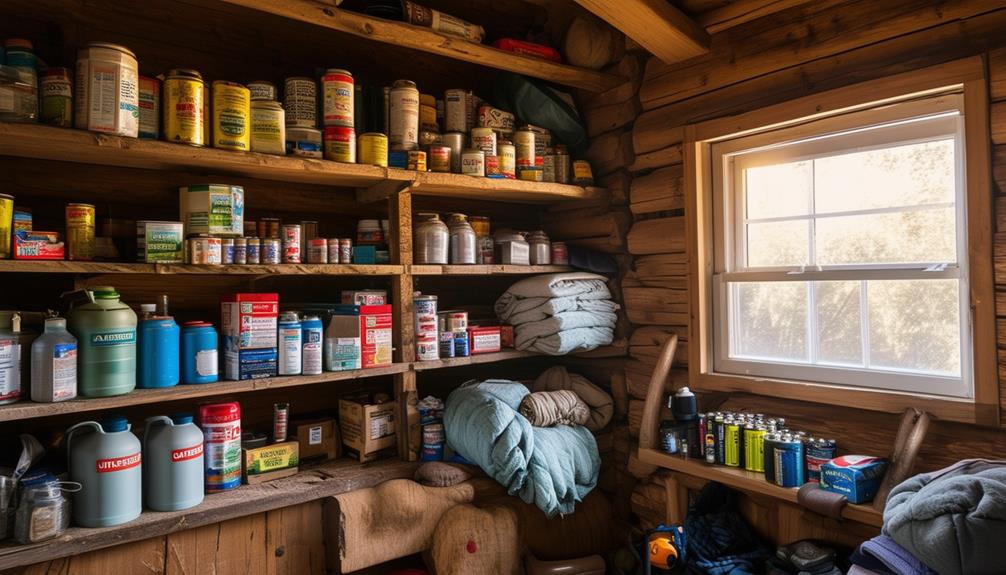
When planning your bug out location, it's essential to prepare a comprehensive list of supplies to ensure your safety and comfort during emergencies. Focus on securing sturdy shelter materials, water storage and filtration systems, and a stockpile of non-perishable foods. Ensure medical supplies are accessible for managing injuries, and hygiene products are available to maintain cleanliness. Tools, communication gear, and navigation equipment can distinguish between a seamless experience and a challenging ordeal. Are you covering all the bases to make your bug out location truly resilient? Let's delve into each category extensively.
Shelter Supplies

When setting up your bug out location, prioritizing high-quality shelter supplies is crucial. Strong tents and resilient tarps are essential to protect you from the elements and provide a comfortable rest area. Choose robust tents that can endure harsh weather conditions, ensuring they're appropriately sized and durable for your group and the expected weather scenarios.
Invest in tough tarps, as they're versatile and can serve as extra shelter, ground cover, or even rainwater collection. Insulated sleeping bags are vital for maintaining warmth during cold nights. The quality of these sleeping bags can significantly impact your comfort and survival. Weather-resistant clothing is another critical component of your shelter supplies. These garments will protect you from rain, wind, and cold, keeping you dry and warm.
Proper maintenance and storage of your shelter supplies are equally important. Regular checks will ensure that everything is in good condition and ready for use when needed. Well-chosen and well-maintained shelter supplies will make your bug out location more effective.
Water Supplies
When planning your bug-out location, water supplies are crucial. Consider various water storage options, efficient filtration and purification methods, and sustainable rainwater collection systems. Securing access to clean water is vital in an emergency.
Water Storage Options
Effective water storage is fundamental for any bug-out location to ensure a reliable supply of clean drinking water. In an emergency, having the right water storage options can make all the difference. Here are some effective water storage solutions:
- 5-Gallon Bottles: These are portable, easy to store, and practical for emergency situations. They provide a convenient way to transport water if needed.
- Collapsible Containers: These containers save space when not in use and can hold substantial amounts of water when filled, making them ideal for a bug-out location.
- Rainwater Capture System: Implementing a rainwater capture system is a smart move. This system collects rainwater, which can be used for non-potable tasks like cleaning and hygiene, thereby conserving your potable water supplies.
- Dedicated Non-Potable Water Storage: Having a separate storage system for non-potable water ensures that you have water available for tasks like cleaning and hygiene without depleting your drinking water reserves.
Filtration and Purification
Ensuring your bug-out location has access to clean and safe drinking water requires investing in reliable water filtration and purification systems. Start by considering portable water filters, which are compact and effective for on-the-go filtration—ideal for hiking or rapid movement. Purification tablets are another essential addition; these small but potent tablets can eliminate most contaminants, making natural water sources safe to drink.
A gravity-fed filtration system is perfect for a stationary bug-out location. It uses gravity to push water through a filter, removing pathogens and impurities without needing electricity. Boiling water is another reliable emergency method to kill pathogens, although it requires a heat source.
| Filtration Method | Key Benefits |
|---|---|
| Portable Water Filters | Compact, on-the-go option |
| Purification Tablets | Easy to use, chemical-based |
| Gravity-Fed System | Efficient, no electricity needed |
| Boiling | Reliable for emergencies |
Remember to stockpile extra filters, replacement parts, and maintenance supplies to ensure your filtration system remains effective over time. Regularly test your equipment to confirm it's working properly and providing clean drinking water. By investing in a range of purification systems, you'll be well-prepared to tackle any water contamination issues that may arise.
Rainwater Collection Systems
A well-maintained rainwater harvesting system can serve as a sustainable and reliable water source at your bug-out location. By setting up a system to collect rainwater, you'll ensure a consistent supply of clean drinking water, which is crucial during emergencies. Rainwater collection systems can range from simple rain barrels to more sophisticated setups that include filtration systems to ensure the water is safe for consumption.
Rainwater offers numerous benefits:
- Chemical-free: Unlike tap water, rainwater is typically free from chlorine and other chemicals.
- Versatile: It can be used for irrigation, hygiene, and drinking when properly filtered.
- Sustainable: Rainwater harvesting reduces dependence on traditional water sources.
- Cost-effective: Once established, maintaining a rainwater collection system is inexpensive.
For optimal performance, regular maintenance of your rainwater harvesting system is essential. Clean your gutters and storage containers to prevent debris buildup, and check that your filtration systems are functioning correctly. This ongoing upkeep will help preserve the quality of your water source, making your bug-out location more self-sufficient and resilient in emergencies.
Food Supplies

When planning food supplies for your bug out location, prioritize non-perishable items like canned goods, rice, and freeze-dried meals. Consider dietary needs and preferences to maintain nutritional balance. Additionally, ensure you have essential tools such as a manual can opener and a portable camping stove for food preparation.
Non-Perishable Food Items
Stockpiling non-perishable food items is essential for ensuring long-term survival at your bug-out location. In emergencies, a well-rounded food stockpile can mean the difference between comfort and crisis. Focus on foods with a long shelf life that meet your nutritional needs during these times.
To get started, include a variety of non-perishable options in your stockpile. Here are some key components:
- Canned Goods: Items like beans, vegetables, and soups provide a good balance of nutrition and convenience.
- Grains: Rice, pasta, and oats can be stored for years and serve as a solid foundation for meals.
- Dried Fruits: These offer essential vitamins and can boost morale.
- Protein Sources: Consider canned meats, nut butters, and dried legumes.
Always consider dietary restrictions and preferences when selecting your non-perishable food items. This ensures everyone at your bug-out location can meet their nutritional needs. Regularly rotate and replenish your stockpile to maintain freshness and optimal nutrition. By preparing diligently, you'll be ready to face any emergency with confidence and peace of mind.
Long-Term Storage Solutions
Effective long-term storage solutions are essential for maintaining the longevity and quality of your non-perishable food items. Incorporate freeze-dried foods, canned goods, and bulk staples into your food storage plans, as these options are shelf-stable and boast extended shelf lives, making them ideal for emergency situations or bug-out locations.
To optimize long-term storage, utilize Mylar bags, oxygen absorbers, and food-grade buckets. These tools help keep your food items fresh and safe from spoilage. Vacuum sealing is another excellent method to preserve quality and extend shelf life.
Regularly rotate your food supplies to ensure you're consuming the oldest items first, maintaining freshness and preventing waste. Properly label and organize your long-term food storage to easily track expiration dates and manage your inventory. This systematic approach will help you avoid any unpleasant surprises when you need your supplies the most.
Nutritional Balance Essentials
Ensuring your bug-out location has a nutritionally balanced food supply is crucial for maintaining health and energy during emergencies. Stockpiling a diverse array of nutritious foods helps maintain a balanced diet and meets all dietary needs. Focus on foods with a long shelf life to ensure viability over extended periods.
Here's a concise breakdown of what to include:
- Carbohydrates: Store grains such as rice, oats, and pasta. These provide essential energy and have a long shelf life.
- Proteins: Include canned meats, beans, and lentils. These are vital for muscle repair and overall health.
- Fats: Stock up on nuts, seeds, and canned fish. Healthy fats are critical for brain function and sustained energy.
- Vitamins and Minerals: Dehydrated fruits and vegetables, along with multivitamins, can help meet your nutritional needs.
Consider any allergies or dietary restrictions when selecting your survival food. Regularly rotate and replenish your stockpile to prevent spoilage and maintain nutritional value.
Medical Supplies
When preparing your bug-out location, ensure you include essential medical supplies such as bandages, antiseptics, and gauze pads for managing minor injuries. A well-stocked first aid kit is crucial and should include items like scissors, tweezers, and thermometers to address various medical emergencies.
Additionally, stockpile any prescription medications needed by you or your family members. Pain relievers and allergy medications are also important. These supplies enable you to manage minor injuries promptly and control more serious conditions until professional help is available.
Furthermore, include personal hygiene items to maintain health and prevent infections. Your bug-out location should be equipped to handle both minor injuries and severe medical emergencies that might arise.
Here's a quick reference table to help you remember what to include:
| Category | Vital Items | Purpose |
|---|---|---|
| First Aid Kit | Scissors, Tweezers, Thermometers | Medical Emergencies |
| Medical Supplies | Bandages, Antiseptics, Gauze Pads | Handling Minor Injuries |
| Prescription Meds | Essential Prescriptions, Pain Relievers, Allergy Meds | Chronic Conditions and Pain Relief |
| Detailed Care | First Aid Manuals, Splints, Medical Tape | Advanced Medical Care |
| Personal Hygiene | Hand Sanitizers, Wet Wipes, Feminine Products | Infection Prevention |
Hygiene Products
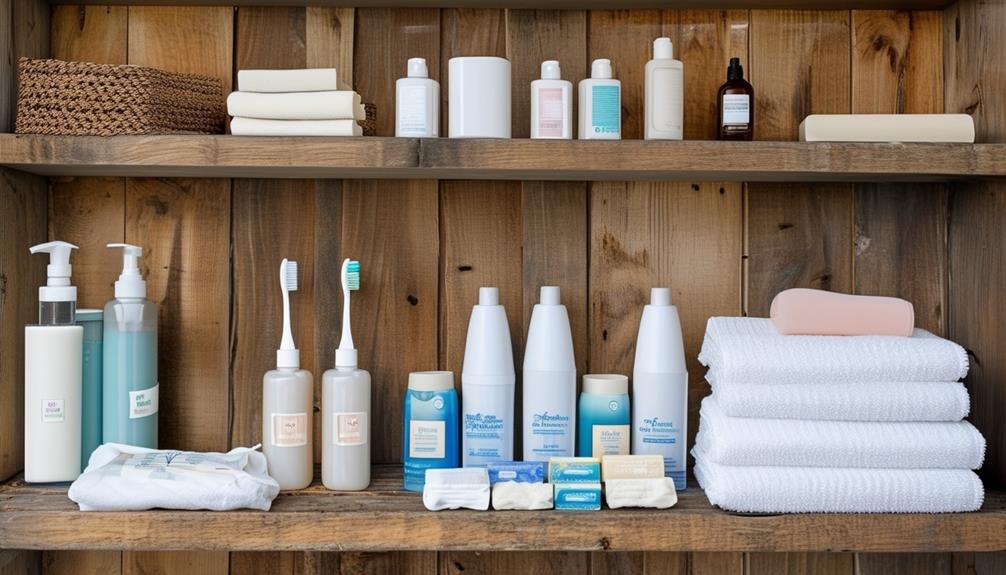
Stocking up on hygiene products is essential for maintaining cleanliness and preventing infections at your bug-out location. Prioritizing personal sanitation is crucial when planning for emergencies. An adequate supply of hygiene products will help you remain healthy and comfortable.
Consider these essential items for your bug-out location:
- Toothpaste and toothbrushes: Vital for preventing dental issues that are difficult to treat in emergencies.
- Hand sanitizer and wet wipes: Invaluable for hygiene maintenance and disinfecting hands and surfaces when water is scarce.
- Soap and shampoo: Necessary for general cleanliness and preventing grime buildup.
- Feminine hygiene products: Essential for the comfort and health of everyone at your location.
Include unscented bleach for disinfecting purposes to maintain high hygiene standards. Wet wipes are particularly useful for quick hygiene maintenance when traditional bathing isn't possible.
Tools and Equipment
Equipping your bug-out location with essential tools and equipment is crucial for efficiently handling emergencies. A survival knife is indispensable for cutting rope, preparing food, and self-defense. Its versatility and durability make it a key asset. Complement this with a multi-tool, which can perform various tasks such as screwing, unscrewing, opening cans, and basic repairs. Its compact design ensures easy portability and storage.
An axe is another critical piece of equipment, ideal for chopping wood—vital for building shelters and generating firewood. Ensure the axe is robust enough to endure rugged use. For lighting, an LED headlamp is invaluable, allowing hands-free operation while providing bright, reliable illumination. Pair it with a mini LED keychain for quick, portable lighting.
Investing in high-quality, versatile tools ensures preparedness for a range of scenarios. Each tool serves a unique function, and together, they provide comprehensive readiness for unexpected situations. Prioritize durable tools, as they'll offer long-term reliability.
Communication Gear

Reliable communication gear is essential for staying informed and connected during emergencies at your bug-out location. Being prepared ensures you can keep in touch with loved ones, receive critical updates, and call for help if necessary.
Here's what you need:
- Ham radio: A ham radio, with the proper license, offers reliable long-distance communication when other methods fail. It's indispensable for any serious bug-out setup.
- Crank power chargers: These are crucial for keeping all your communication gear powered, especially during power outages. They ensure your devices remain operational.
- Signal lights: In low-light conditions, signal lights can alert others to your location or send distress signals. They're simple yet effective.
- Local area maps and compasses: Essential for navigation and communication in unfamiliar territories. Even if digital devices fail, a map and compass will guide you.
Additionally, don't forget about cell phones. While dependent on network availability, they can still be valuable for local communication and accessing information. Stocking up on these communication essentials will make your bug-out location safer and more prepared for any emergency.
Lighting and Fuel
Ensuring sufficient lighting and fuel at your bug-out location is essential for maintaining safety and functionality during emergencies. Your emergency kit should include various lighting sources to cover different scenarios. Reliable options like hurricane lamps, flashlights, and solar rechargeable lights are indispensable, ensuring you're not left in the dark when the power goes out.
Stock up on Coleman fuel canisters to keep your stoves and other fuel-dependent devices running smoothly. Additionally, remember to include mantles for propane lanterns and plenty of batteries to keep your lighting sources operational. As backup lighting solutions, have candles and matches on hand; they can serve as dependable alternatives if your primary sources fail.
Fuel storage is another important consideration. Keep gasoline containers to power generators or other necessary fuel-dependent devices. This ensures you can maintain lighting and heating even during extended emergencies.
Conclusion
To conclude, ensuring your bug out location is well-stocked with essential supplies is critical during emergencies. Prioritize securing shelter supplies, water, food, medical items, and hygiene products to meet your basic needs. Equip yourself with tools, communication gear, lighting, and fuel to stay prepared for any situation. By taking these steps, you'll be ready to face unforeseen circumstances with confidence and resilience. Don't delay—start stockpiling today to safeguard your future.

